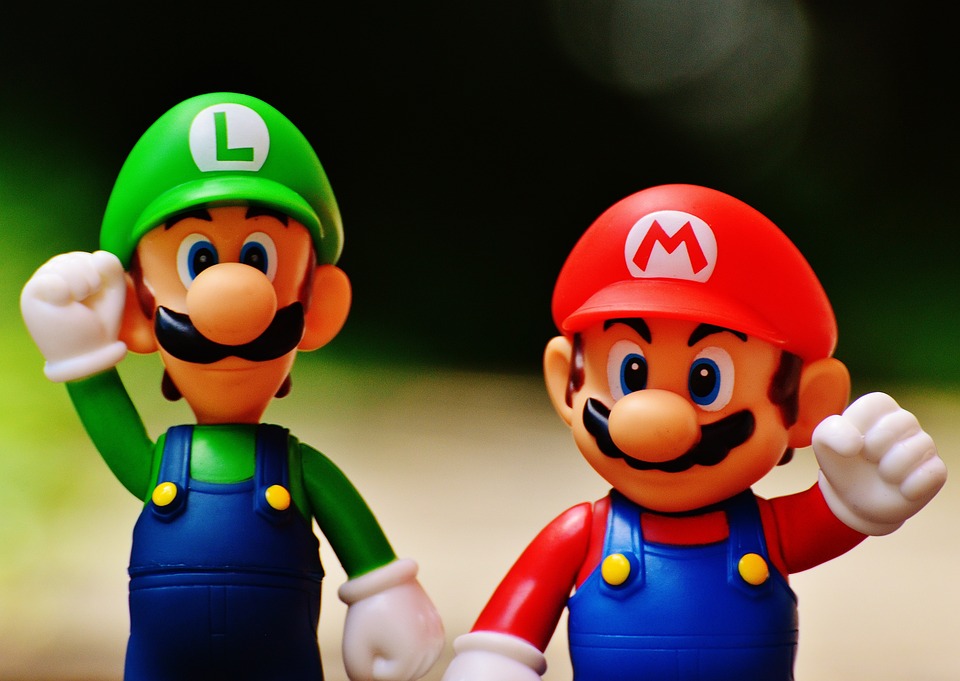Super Mario 64 stands as one of the most iconic video games in the annals of gaming history. Released in 1996 for the Nintendo 64, it was not just a game; it was a revolution that transformed how players and developers perceived 3D platforming. Let’s take a deep dive into what makes this game so special.
The Genesis of Super Mario 64
The mid-’90s were a transitional period for video games. Developers were shifting from 2D to 3D graphics, and Nintendo had to create something exceptional to pave the way. Enter Shigeru Miyamoto, the legendary game designer whose vision brought Mario from the flat worlds of the NES and SNES into a sprawling, three-dimensional playground. Super Mario 64 wasn’t just another Mario game; it was a technological marvel that demonstrated what the Nintendo 64 could achieve in terms of graphics, gameplay, and design.
The first thing players noticed was the freedom. No longer confined by a linear 2D plane, Mario could move in any direction. Jumping, running, and swimming had never felt this liberating. The hub world, Princess Peach’s Castle, was itself a character in the game, with hidden secrets and levels accessible through magical paintings.
The Core Gameplay
The brilliance of Super Mario 64 lies in its simplicity and depth. Players control Mario as he collects Power Stars from various worlds to rescue Princess Peach from Bowser. Each world is distinct, offering its own set of challenges, puzzles, and enemies. From the tropical shores of Jolly Roger Bay to the fiery pits of Lethal Lava Land, the level design showcases Nintendo’s knack for creating immersive environments.
Missions vary across worlds, keeping the gameplay fresh. One moment you might be racing a Koopa the Quick, the next, you’re carefully navigating floating platforms high above the ground. The diversity keeps players engaged and intrigued, always eager to see what the next painting holds.
Stars can often be collected in multiple ways, offering a non-linear approach to completing the game. For instance, you could spend time collecting easy stars in early levels before braving the more difficult ones or vice versa. This flexibility allows players to tailor their journey, emphasizing exploration and experimentation rather than rote memorization and repetition.
Character Moves and Controls
One of the standout features of Super Mario 64 is Mario’s extensive range of moves. From basic runs and jumps to the advanced “Wall Kick” and “Long Jump,” mastering these techniques is key. The game perfectly balances the “easy to learn, hard to master” axiom. While you can complete the game with a basic understanding of Mario’s moves, true mastery reveals a depth of control that was unprecedented at the time.
How Mario moves feels almost intuitive. The analog stick allows for precise control over his speed and direction, and the game’s physics make each leap and bound exhilarating. Performing a perfect triple jump to grab a high ledge or nailing a series of wall kicks to bypass a tricky section provides a sense of accomplishment few games can match.
Graphics and Soundtrack
Graphically, Super Mario 64 was groundbreaking for its time. The transition from 2D sprites to 3D polygonal models was handled expertly. While by today’s standards, its visuals might seem dated, there’s a certain charm to its blocky characters and colorful landscapes. Importantly, the graphical design is functional, clearly distinguishing between interactive objects and scenery, which is vital in a platforming game.
And oh, the soundtrack! Composed by Koji Kondo, the music of Super Mario 64 is unforgettable. Themes such as “Bob-omb Battlefield” and “Dire, Dire Docks” are ingrained in the minds of gamers worldwide. The music adapts according to the level and atmosphere, perfectly encapsulating the essence of each world. Even years later, the melodies resonate, reminding players of their adventures in the sprawling 3D wonderland.
Tips and Tricks
While Super Mario 64 is designed to be approachable, a few tips and tricks can go a long way.
- Master the Side Somersault: By quickly changing directions and pressing the jump button, Mario can reach higher platforms that are otherwise out of reach.
- Understand Wall Kicks: When Mario jumps into a wall at a specific angle, pressing the jump button again will launch him off the wall. This technique is essential for collecting some of the more challenging stars.
- Use Cannons Wisely: Some areas require you to use cannons to reach distant platforms. Aim carefully, and if you miss your target, try adjusting the angle slightly rather than drastically changing your aim.
- Red Coins First: Some levels, like “Whomp’s Fortress” or “Cool, Cool Mountain,” have red coin challenges that are easier to complete with the entire map in mind. Consider going for these first to familiarize yourself with the layout.
Cultural Impact and Legacy
Super Mario 64 isn’t just a game; it’s a cultural touchstone. It has influenced countless titles and continues to be studied for its design philosophy. It showcased the potential of 3D gaming and set a precedent for future titles. The game’s open-world design, focus on exploration, and precise controls have inspired generations of game developers.
Even in the modern era, speedrunners flock to Super Mario 64, continually discovering new glitches and techniques to shave seconds off their completion times. Websites like Speedrun.com host thousands of runs, and the community is ever-expanding. The game’s flexibility and depth make it a perfect candidate for this kind of dedicated play, continually breathing new life into it even decades after its release.
For those wanting a more academic dive, numerous articles explore its design intricacies. The GDC has various presentations and lectures analyzing its impact and innovative design elements.
In recent years, Nintendo has acknowledged Mario 64‘s enduring popularity with re-releases, such as those in the Super Mario 3D All-Stars collection for the Nintendo Switch. These reissues have allowed a new generation to experience the magic, ensuring Mario’s 64-bit adventure remains timeless.
In Conclusion
Super Mario 64 is more than a game—it’s a landmark achievement in gaming history. Its innovative design, groundbreaking graphics, captivating soundtrack, and sheer fun make it a must-play. New innovations and technologies have continued to evolve, but the core principles established by Super Mario 64 remain. For anyone who calls themselves a gamer, it’s a rite of passage, a historical piece worthy of respect and remembrance.
So, dust off that Nintendo 64 or grab a copy on the latest re-release. Dive back into Princess Peach’s Castle, jump through those magical paintings, and let nostalgia take you on a journey. As always in the world of Mario—It’s-a me, Mario!





